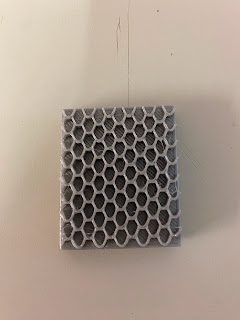Site Specificity
Site Specificity
The term 'site specificity' refers to a work of art designed specifically for a particular location or one that relates to the site itself. It is produced by both commercial and independent artists, and can include work such as sculpture, stencil graffiti, rock balancing or carving, and other art forms.
Pierre Vivant: Green and Yellow

This piece consists of two words cut into a rapeseed field in Oxfordshire. The word 'Green' was made by cutting the heads off the plants to show the green stems, and the word 'Yellow' was made by cutting around the letters, so the word itself stays yellow. After a while, the yellow flowers faded back to green, and the chopped flower heads bloomed again, resulting in the word 'Green' now being yellow, and the word 'Yellow' now being green.
This piece is very site specific as the site itself is being manipulated to produce it. It's not something one can move around, or put in a gallery, with the exception of photos. It also can only be situated in this field, or one almost identical. Not only did he need the bright flowers with contrasting stems, but he needed a field with hills, so that the words could be seen at eye level, and not only from above.
Pierre also had to take into account the unpredictability of nature when creating this. He had to make sure not to trample any plants getting to and from the 'words' so that they stood out from a sea of yellow and were easily readable. In addition, this piece is temporary, once the crops were harvested, the piece would disappear. This is another thing I like about this piece, its fleeting existence, and the understanding that one has to appreciate it before it goes.
Jason deCaires Taylor: Nest
Nest is situated off the coast of Gili Meno, a small island between Bali and Lombok in Indonesia that it heavily farmed due to its clear waters and large turtle population. It depicts a circle of 48 life-size figures paired into couples, which surround more figures curled up on the seafloor. The interlocking pieces on the bottom connect, forming a solid structure for marine life to colonise and inhabit.Taylor hopes for Nest to remind visitors of the fragile life and objects under the sea, including 40% of the worlds coral reef's, which have been lost over the past few decades.
The sculptures are made from pH neutral, environmental-grade cement and are anchored to the seabed. Within a year, it provided a home for soft corals and sponges, which in turn encouraged other marine life to move in.
I like this piece as not only is it interesting to look at, it also serves the purpose of educating the public on the damage our coral reefs have suffered, whilst provided a habitat for more coral and marine life to thrive. Although it is situated underwater, Taylor has taken special care to make sure every piece of his is accessible to the most people with each piece being snorkelling or diving distance from the shoreline.




Comments
Post a Comment